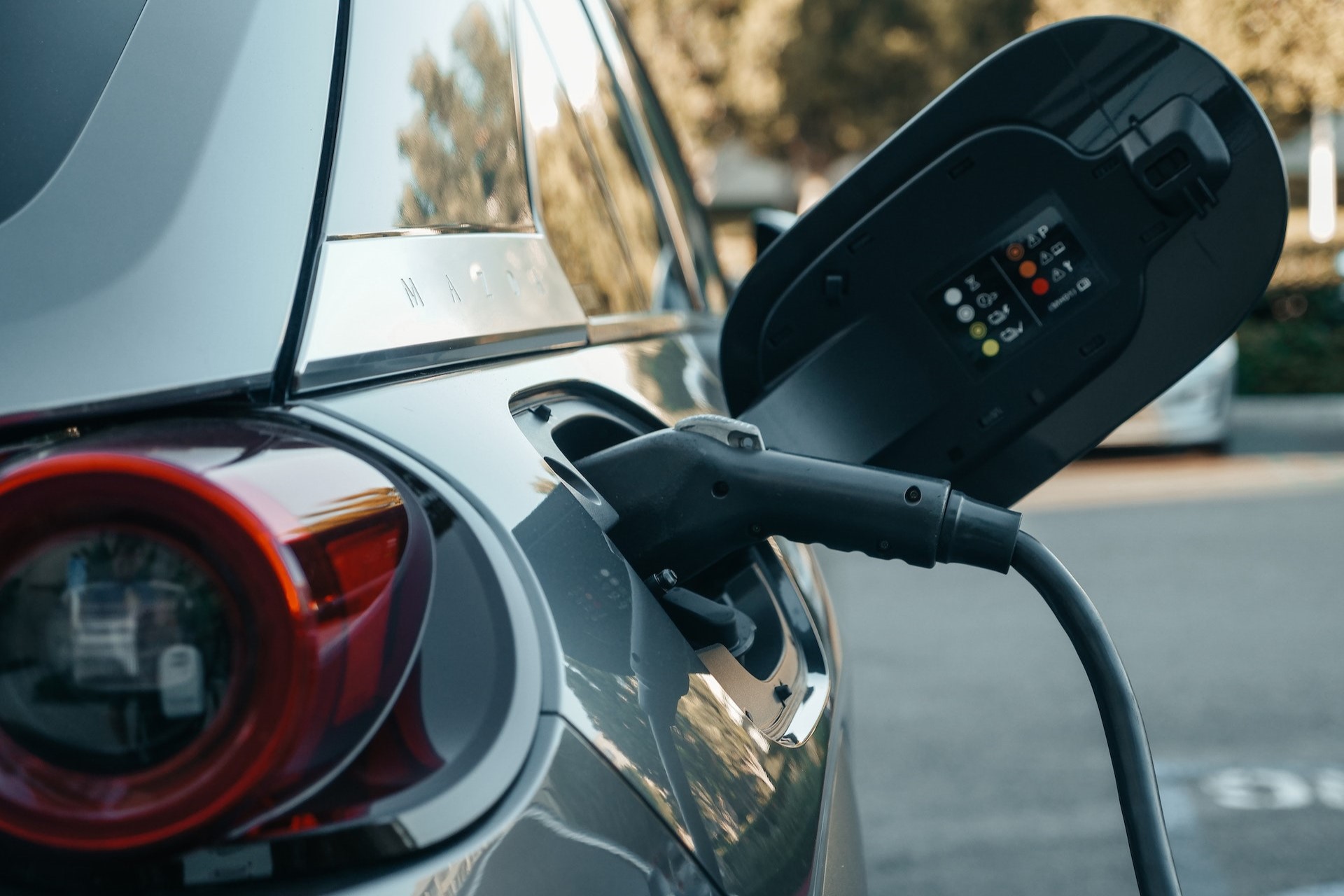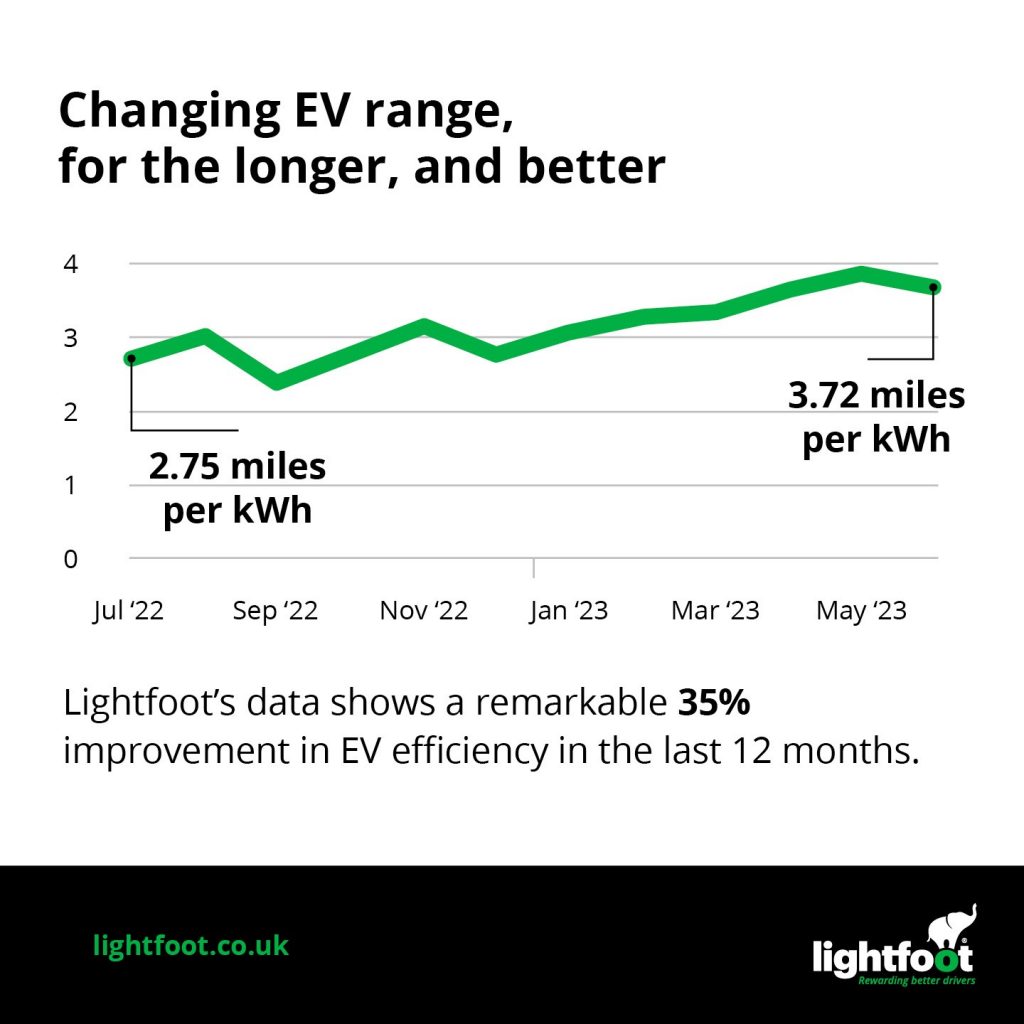Lightfoot’s driver coaching solution improves EV efficiency by an incredible 35%

As EV adoption ramps up across the fleet industry, there are still many uncertainties surrounding electric vehicle range and efficiency, with concerns centring around how far a BEV can really travel on a single charge, and whether this is compatible with the journey times of commercial drivers.
At Lightfoot, we work with fleets from all sectors across a mix of petrol, diesel, and electric vehicles, from cars to LCVs. Our telematics device works with traditionally fuelled vehicles and EVs alike, providing us with a wealth of data and rich insights into the progress of electric fleet vehicles and the impact that our driver coaching technology has on their performance.
In analysing hundreds of electric company cars in our system, which have their consumption and mileage measured in real-time through the in-cab devices, we found that the real-life efficiency of these EVs has improved by a remarkable 35% in the past year through driving with Lightfoot.
All drivers in the dataset were operating vehicles that had our fleet telematics system installed, and so were provided with feedback in the form of visual and audio prompts to help improve their driving style and travel more efficiently.
On average, the efficiency of these vehicles rose from 2.75 miles per kWh in July 2022 to 3.72 miles per kWh in June 2023.
Managing Director of Lightfoot Paul Hollick has commended the progress, stating that it reflects the extraordinary strides made by the fleet sector in embracing electric vehicles.
“What our data clearly shows is that businesses and their drivers are combining our system with the new electric vehicle technology available and hugely improving efficiency and range.”

A host of benefits for electric fleets
The difference that our in-cab driver coaching and rewards technology has made to these company cars in real-world terms is significant. In 2022, a driver operating an electric car with a 60-kWh battery at 2.75 miles per kWh could expect to travel a distance of 165 miles. Fast forward to this year, and by mid-2023 that driver would have increased their average range to 223 miles – going almost 60 miles further on a single charge.
The improvements seen within electric company cars fitted with Lightfoot are not limited to range alone. Assuming that a 60-kWh battery car was charged at 30p per kWh in 2022, it would have cost 11p per mile to run. However, in 2023, this cost drops to just 8p per mile. Over 20,000 miles a year, this translates to a fantastic £580 saving in electricity costs where Lightfoot’s telematics technology has been deployed.
Lightfoot MD Paul Hollick added, “Even with the recent high electricity prices, electric cars have always tended to be cheaper to run than petrol or diesel, unless they were charged at the most expensive public chargers. But our data now shows that with this marked improvement in efficiency, the case for changing to electric is becoming even more compelling.”
An insight into the impact of external factors
Our EV telematics data also sheds light on the influence of environmental factors on vehicle efficiency. Despite common perceptions that winter is the worst time to operate an EV, Lightfoot’s data shows that the improvement in range was steady across the year, with the only significant slowdown occurring during the peak of summer.
At the end of July through to early August 2022, the UK was experiencing a record-breaking heatwave. During this period, the efficiency of the electric cars in our dataset fell from 3.0 miles per kWh to 2.4 miles per kWh – a drop of 20%. This shows that in such conditions, the effect of the heavy use of air conditioning will far outweigh any advantages of warmer weather on EV battery efficiency.
Commenting on this, Paul Hollick said: “The noticeable hit to efficiency during last year’s heatwave shows that, in fact, air conditioning has a bigger impact on EV range than colder weather during the winter months.”
It’s clear that as businesses continue to transition to electric vehicles ahead of the recently revised 2035 deadline, innovations such as Lightfoot’s driver coaching solution will play a pivotal role in making the switch as successful and sustainable as possible.
Download the full Spotlight Report infographic here.
